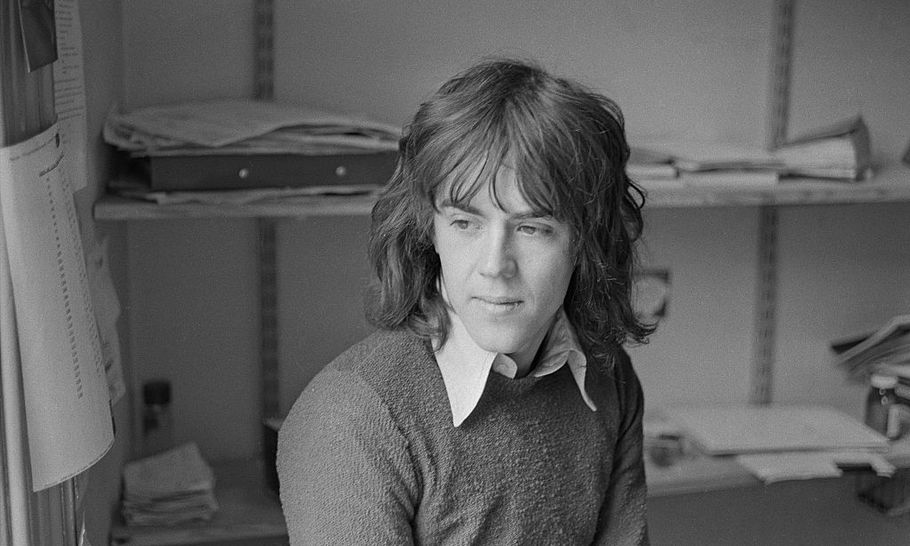Plugging a need: the grand old British tradition of magazine journalism

(Photo by Stan Meagher/Daily Express/Hulton Archive/Getty Images)
The death of Tony Elliott (pictured above), who founded Time Out in 1968 and built it into a business empire, illustrates the perennial truth of the great American editor Irving Kristol’s injunction: “If you have an idea, start a magazine.” Time Out is a textbook example of a title that filled a gap in the market: a listings magazine that covered both the London counterculture and mainstream arts.
Like his Stowe contemporary Richard Branson, Elliott had enjoyed a privileged education, but he was only an ordinary undergraduate at Keele when he decided to spend a £75 present from his aunt on creating the magazine he wanted to read: “I think people took one look at the clarity of what we were doing and thought: ‘Why hasn’t anyone thought of doing this before?’ It was really plugging a need.”
When his staff went on strike in 1981, the then Leader of the Greater London Council, Ken Livingstone, devoted public money to supporting a rival brand, City Limits. When Time Out reappeared, it soon saw off its competitor, thereby demonstrating another fact of life: state authorities are hopeless at backing winners. By the time Elliott had extended Time Out into a global brand, he was worth £91 million.
Magazines have been around for almost as long as newspapers; indeed, the distinction between the two is often hard to define. One of the most successful magazines of all, The Economist, still considers itself a newspaper and other oldest of them all, The Spectator, only abandoned its newspaper format in the second half of the century. That era was a golden age for a new genre, originating in America: the illustrated news magazine. Time and Newsweek were imitated everywhere, but with distinctive national characteristics: in France Paris Match was admired above all for its stylish photography, while in Germany Der Spiegel gained prestige by running long-form articles and interviews worthy of The New Yorker. In Britain the national newspaper culture, especially popular at weekends, was strong enough to see off the challenge by creating their own “colour supplements”. The weekly magazines adapted by focusing on comment and analysis, rather than news and pictures.
Rising to the digital challenge, magazines have not only survived into the 21st century but flourished, with new titles emerging all the time. Indeed, TheArticle is one of them. Although we prefer to define ourselves as an online publishing platform, our wide range of views and subject matter place TheArticle firmly in the proud British tradition of magazine journalism, steadily increasing circulation while maintaining the highest standards.
Anyone who wishes to learn about that tradition should read 10,000 Not Out: The History of The Spectator, 1828-2020. In just 250 crowded pages David Butterfield, also a contributor to TheArticle, succeeds brilliantly in his task of evoking the past of the only magazine in the world to have reached 10,000 issues. The Spectator is also the only magazine that can claim to have been edited by two Chancellors of the Exchequer (Iain Macleod and Nigel Lawson) and, of course, the present Prime Minister. Butterfield’s razor-sharp eye traces every connection between the magazine and that microcosm of British society to which one of its writers, Henry Fairlie, gave a name that has stuck: the Establishment. If Time Out and Private Eye used to appeal to those who saw themselves as rebels against the Establishment, The Spectator was its house magazine. But precisely because it was at the heart of the Establishment, it could reveal the latter’s machinations — as Macleod famously did in his exposure of “the magic circle” that chose the Tory leader in 1963, thereby ensuring that a Prime Minister could never be selected by a secret cabal again.
For those who wish to understand not only the romance and hard grind of journalism, but also the subtle nexus of politics and the press, 10,000 Not Out will make enjoyable summer reading. Not that readers of TheArticle will need reminding, but the grand old British tradition of magazine journalism that Butterfield chronicles is alive and kicking — as former practitioners, now on the receiving end in high office, are well aware.





